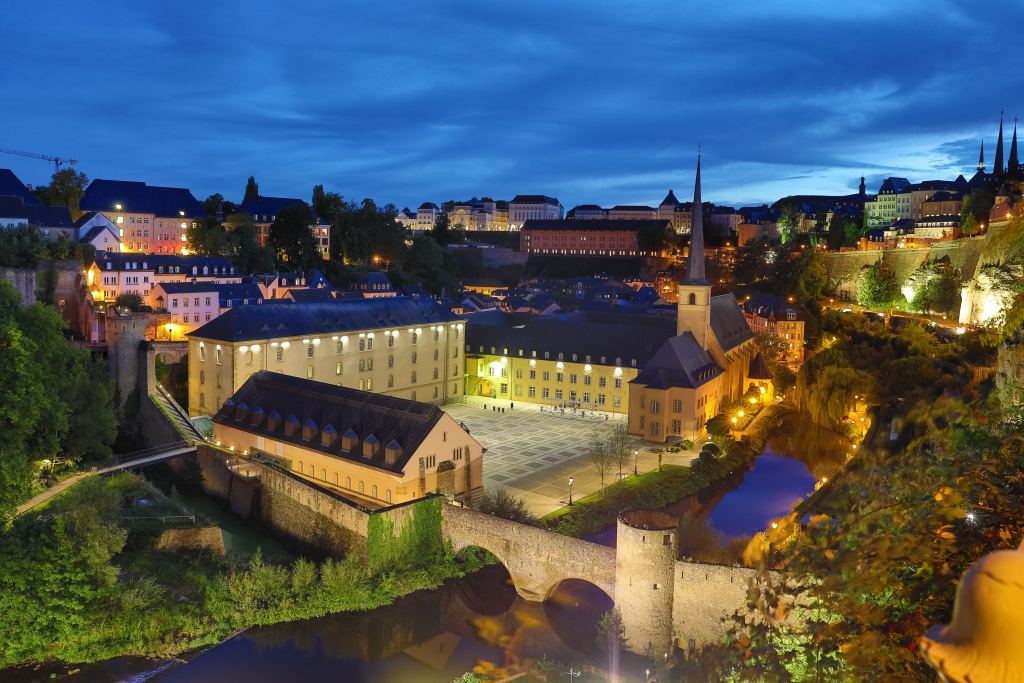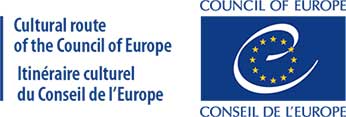Das Erweiterte Teilabkommen über Kulturrouten des Europarates

Das 2010 eingesetzte Erweiterte Teilabkommen über Kulturrouten des Europarates (EPA) zielt darauf ab, das Potenzial der Kulturrouten für kulturelle Zusammenarbeit, nachhaltige territoriale Entwicklung und sozialen Zusammenhalt zu stärken, wobei der Schwerpunkt auf Themen von symbolischer Bedeutung für die europäische Einheit, Geschichte, Kultur,für die europäischen Werte sowie für die Entdeckung weniger bekannter Reiseziele liegt.
Das EPA trägt zur Stärkung der demokratischen Dimension des Kulturaustauschs und des Tourismus bei, indem es Netzwerke und Vereinigungen, lokale und regionale Behörden, Universitäten und Organisationen einbezieht. Es trägt zur Erhaltung eines vielfältigen Erbes durch themenbezogene und alternative touristische Routen und durch Kulturprojekte bei.
Das EPA folgt den politischen Leitlinien des Europarates, beschließt die Programmstrategie und vergibt die Zertifizierung "Kulturrouten des Europarates". Sie steht den Mitgliedstaaten und Nichtmitgliedstaaten des Europarates offen und ist darauf ausgerichtet, die nationalen, regionalen und lokalen Initiativen politisch zu unterstützen, zur Förderung der Kultur und des Tourismus. Die vollständige Liste der EPA-Mitgliedstaaten finden Sie hier.
Das EPA hat zwei satzungsmäßige Gremien:
- Der EPA-Verwaltungsrat besteht aus Vertretern der Ministerien der Mitgliedstaaten; er verleiht die „Zertifizierung zur Kulturroute des Europarates“ . Der Kongress der Gemeinden und Regionen Europas, das Europäische Parlament, die Europäische Kommission, die UNWTO, die UNESCO und die OECD beteiligen sich an den Tätigkeiten.
- Das EPA-Gesetzliche Komitee setzt sich aus Vertretern der Außenministerien zusammen und beschließt das jährliche Budget.
Ein wichtiges Ereignis ist die jährliche Kulturroutentagung, welches Vertreter der Kulturrouten, staatlicher Organisationen, Netzwerke und internationaler Denkmalschutz- und Tourismusorganisation zusammenbringt. Die jährliche Kulturroutentagung wird in enger Zusammenarbeit mit einem der EPA-Mitgliedstaaten organisiert.
Gemäß der Entschließung des Ministerkomitees CM/Res(2013)66 zu Artikel 1 lautet das Ziel des EPA folgendermaßen:
Das erweiterte Teilabkommen (EPA) trägt zur Förderung der europäischen Identität und Staatsbürgerschaft bei, durch Sensibilisierung für das gemeinsame Erbe Europas und durch Kenntniss des gemeinsamen Erbes Europas , durch die Entwicklung kultureller Verbindungen und durch den Dialog innerhalb Europas sowie mit anderen Ländern und Regionen. Das EPA strebt die Schaffung eines gemeinsamen Kulturraums durch die Entwicklung von Kulturrouten an, die darauf abzielen, die Sensibilisierung für Erbe, Bildung, Vernetzung, Qualität und nachhaltigen grenzüberschreitenden Tourismus und für andere damit zusammenhängende Aktivitäten zu fördern.
Das EPA trägt dazu bei, das Potenzial der Kulturrouten für die kulturelle Zusammenarbeit, die nachhaltige territoriale Entwicklung und den sozialen Zusammenhalt zu stärken, wobei ein besonderer Schwerpunkt auf Themen von symbolischer Bedeutung für die europäische Einheit, Geschichte, Kultur und für Werte sowie die für die Entdeckung weniger bekannter Reiseziele liegt. Das EPA trägt zur Stärkung der demokratischen Dimension des Kulturaustauschs und des Tourismus bei, indem es Netzwerke und Vereinigungen, lokale und regionale Behörden, Universitäten und Organisationen einbezieht. Es trägt zur Erhaltung eines vielfältigen Erbes durch themenbezogene und alternative touristische Routen und durch Kulturprojekte bei.
.
Die Aufgaben des EPA sind in Artikel 1 der Entschließung des Ministerkomitees CM/Res(2013)66 wie folgt definiert:
The EPA, drawing in particular on the expertise of the European Cultural Routes Institute, shall provide advice and expert assistance for the development, implementation, evaluation and promotion of cultural routes. This involves expertise on:
- setting up and functioning of project networks and organisations and the development of co‑operation agreements;
- research on the historical background of the routes and the development of the cultural and educational content and activities of the cultural routes;
- development of a sustainable tourist offer based on the cultural routes, thus contributing to the economic well-being of regions;
- preparation and implementation of financing and promotion strategies;
- training and capacity-building for cultural routes operators, in particular in relation to Council of Europe and other international standards in the field of heritage and culture, as well as standards of professional practice in the field of tourism;
- promotion, visibility and all other aspects related to the compliance with the Council of Europe standards.
The EPA shall support networking and exchange between cultural routes operators and other partners in the field of cultural tourism, in particular for:
- the development of a common vision and strategy for cultural routes as tourism products;
- the development of partnerships to increase the resources available for cultural tourism in Europe;
- the identification and dissemination of good practice.
The EPA shall contribute to developing new orientations and standards in relation to cultural routes and tourism in response to the challenges and concerns of modern societies.
The EPA shall develop further methodologies for the promotion of cross-border cultural tourism.
The EPA shall award the Council of Europe Cultural Route certification in accordance with Resolution CM/Res(2013)67-rev the rules for the award of the “Cultural Route of the Council of Europe” certification.
Beitritt und Teilnahme am EPA sind in der Entschließung des Ministerkomitees CM/Res(2013)66 zu Artikel 2 festgelegt:
2.1 Any member State of the Council of Europe or a Contracting Party to the European Cultural Convention, as well as the European Union, may join the EPA by notification addressed to the Secretary General of the Council of Europe.
2.2 The Committee of Ministers, in its composition restricted to the representatives of the member States of the EPA, may, by the majority stipulated in Article 20.d of the Statute of the Council of Europe, invite any non-member State of the Council of Europe to join the EPA, following consultation of EPA members which are not members of the Council of Europe. A non-member State which receives such an invitation shall notify the Secretary General of its intention to become a member of the EPA.
2.3 Member States of the Council of Europe and other Contracting Parties to the European Cultural Convention not joining the EPA may request the status of observer with EPA for a period of maximum one year, without any financial contribution. Decisions in such matters will be made by the Governing Board of the EPA.
2.4 The European Union is invited to join the EPA with the same rights and obligations as the other members of the EPA. Pending its accession to the EPA, the European Union will continue to participate in the work in accordance with arrangements laid down by each body of the EPA.
2.5 In accordance with Statutory Resolution Res(93)28 on partial and enlarged agreements and at their request, the United Nations World Tourism Organisation (OMT), the OECD and UNESCO will be invited to participate in meetings of the EPA as observers without the right to vote.
2.6 The Committee of Ministers, in its composition restricted to the representatives of the States members of the Enlarged Partial Agreement, may, by the majority stipulated in Article 20.d of the Statute of the Council of Europe, following consultation of EPA members which are not members of the Council of Europe, authorise the EPA to invite other international intergovernmental organisations, the representative of the Council of Europe Cultural Routes, NGOs or other bodies who contribute to EPA’s objectives, to participate in its work, without the right to vote.
2.7 The Parliamentary Assembly, the Congress of Local and Regional Authorities of the Council of Europe and the Conference of INGOs, may participate in the work of the EPA in accordance with Article 3.5 (definition of the EPA Governing Board).
Das erweiterte Teilabkommen über Kulturrouten des Europarates basiert auf zwei Entschlüssen des Ministerkomitees des Europarates:

Neumünster Abtei, Luxemburg
Erweitertes Teilabkommen über Kulturrouten des Europarates, Sekretariat
Abbaye de Neumünster
Bâtiment Robert Bruch
28, rue Münster, L-2160 Luxembourg
Grand-Duché de Luxembourg
Tel: +352 24 12 50
[email protected]



